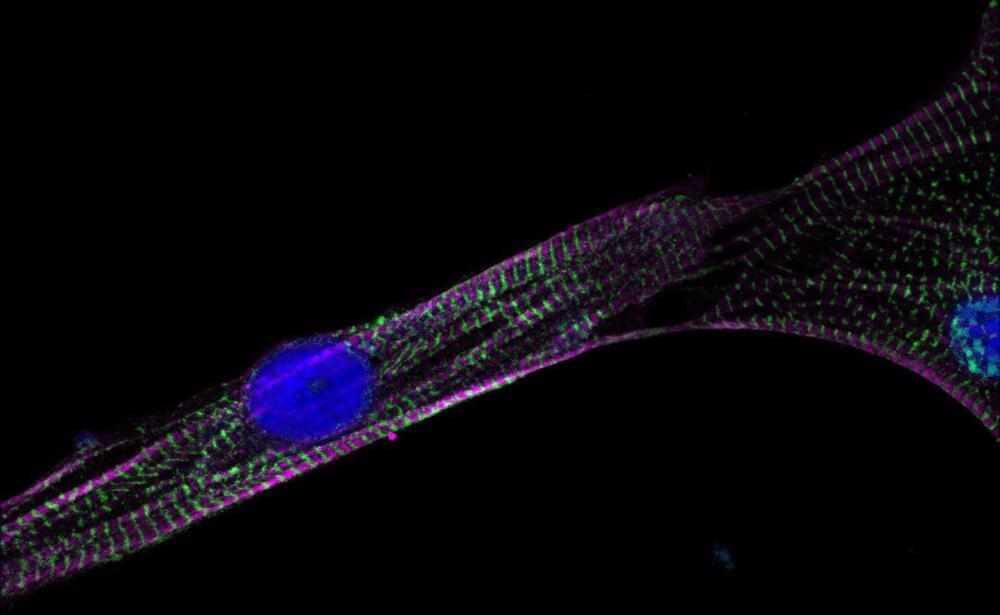Researchers used a new screening technique to identify genes involved in heart cell damage during a common chemotherapy treatment. They also found a drug that may be able to prevent it.


Researchers have suspected for some time that the link between our gut and brain plays a role in the development of Parkinson’s disease.
A recent study identified gut microbes likely to be involved and linked them with decreased riboflavin (vitamin B2) and biotin (vitamin B7), pointing the way to an unexpectedly simple treatment that may help: B vitamins.
“Supplementation of riboflavin and/or biotin is likely to be beneficial in a subset of Parkinson’s disease patients, in which gut dysbiosis plays pivotal roles,” Nagoya University medical researcher Hiroshi Nishiwaki and colleagues write in their paper published in May.

Specially packaged DNA secreted by tumor cells can trigger an immune response that inhibits the metastatic spread of the tumor to the liver, according to a study led by researchers at Weill Cornell Medicine, Memorial Sloan Kettering Cancer Center and Korea’s Yonsei University. The discovery improves the scientific understanding of cancer progression and anticancer immunity, and could yield new clinical tools for assessing and reducing metastasis risk.
In the study, reported Dec. 3 in Nature Cancer, the researchers examined cancer cells’ secretion of short stretches of DNA packaged on tiny capsules called extracellular vesicles (EVs). All cells use EVs to secrete proteins, DNA and other molecules, and tumor cells are particularly active EV secreters.
The biological functions of these EV-packaged molecules are still being explored, but in this case, the researchers discovered that in various cancer types, EV-DNA secreted by tumor cells works as a “danger” signal that activates an anti-tumor response in the liver, reducing the risk of liver metastasis.




For the first time, scientists have invented a liquid ink that doctors can print onto a patient’s scalp to measure brain activity. The technology, presented December 2 in the journal Cell Biomaterials, offers a promising alternative to the cumbersome process currently used for monitoring brainwaves and diagnosing neurological conditions. It also has the potential to enhance non-invasive brain-computer interface applications.
“Our innovations in sensor design, biocompatible ink, and high-speed printing pave the way for future on-body manufacturing of electronic tattoo sensors, with broad applications both within and beyond clinical settings,” says Nanshu Lu, the paper’s co-corresponding author at the University of Texas at Austin.
Electroencephalography (EEG) is an important tool for diagnosing a variety of neurological conditions, including seizures, brain tumors, epilepsy, and brain injuries. During a traditional EEG test, technicians measure the patient’s scalp with rulers and pencils, marking over a dozen spots where they will glue on electrodes, which are connected to a data-collection machine via long wires to monitor the patient’s brain activity. This setup is time consuming and cumbersome, and it can be uncomfortable for many patients, who must sit through the EEG test for hours.

A team of researchers has uncovered a previously unknown phenomenon that could improve the way we design materials at the molecular level. By unlocking a transformation between two types of structural defects on the surface of liquid droplets, the research opens new possibilities for controlling molecular patterns with unprecedented precision. This discovery has broad applications across a range of technologies, including vaccine design, the creation of self-assembling structures, and the synthesis of complex nanoparticles.
When guest molecules are positioned on liquid droplet surfaces, they typically spread out quickly due to diffusion, making it challenging to achieve precise control over their placement. However, the researchers discovered that droplets made from certain materials undergo a process known as “interfacial freezing,” in which the droplet’s surface forms a crystalline molecular monolayer while the bulk of the droplet remains liquid.
This process leads to a spherical shape with a hexagonal surface structure, where the curvature of the surface dictates the formation of structural defects. The defects thus formed are critical to controlling the behavior of guest molecules.

Immunotherapies have shaped the cancer research space over the past decade, proving effective for the treatment of some advanced cancers that previously had no therapeutic options. Chimeric antigen receptor T-cell (CAR T-cell) therapy is one immunotherapeutic approach that has recently garnered significant attention. In brief, CAR T-cell therapy involves removing a patient’s immune cells, altering them in a laboratory setting to make them better primed to detect and kill cancer cells, and delivering the modified cells back to the patient.
A recent study published in the New England Journal of Medicine shows exciting new evidence of the benefits of CAR T cell therapy. The study (NCT04404660) tested the treatment modality called obecabtagene autoleucel (obe-cel), a CAR T-cell therapy that recognizes CD19, a marker expressed on leukemia cells. Unlike other CAR T-cell modalities used to treat leukemia, obe-cel recognizes the CD19 marker with only “intermediate affinity” instead of the “high affinity” recognition of comparable therapies. Researchers suspected the lower affinity associated with obe-cel would correlate with reduced adverse effects experienced by patients receiving other CAR T-cell therapies.
The phase 1b-2 multicenter study, which included 153 adults with relapsed or refractory B-cell acute lymphoblastic leukemia (ALL), revealed promising results. Of the 127 patients who received at least one infusion of obe-cel, 77% experienced remission, with 55% achieving complete remission. The observed remission rates were significantly higher than expected, indicating notable efficacy of the treatment.

A new study from The Hospital for Sick Children (SickKids) and Institut Curie reveals how stem cells sense and respond to their environment, with implications for inflammatory bowel disease and colorectal cancer.
Stem cells constantly adapt to their environment to maintain organ and tissue health, informed by chemical signals and physical forces. When they do not function as intended, stem cells can result in a number of health conditions including inflammatory bowel disease (IBD) and colorectal (bowel) cancer, where they continue to divide until a tumor forms.
Until now, how stem cells sense the physical forces around them has remained unclear, but novel findings published in Science led by Dr. Meryem Baghdadi, a former SickKids postdoctoral researcher, Dr. Tae-Hee Kim at SickKids and Dr. Danijela Vignjevic at Institut Curie, has revealed that stem cells depend on two ion channels, called PIEZO1 and PIEZO2, for their survival.